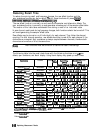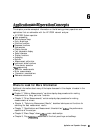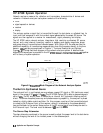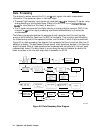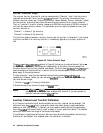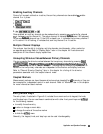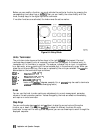
Data Processing
The analyzer’s receiver converts the R, A, and
B
input signals into useful measurement
information. This conversion occurs in two main steps:
n
The swept high frequency input signals are translated to
llxed
low frequency IF signals, using
analog sampling or mixing techniques. (Refer to the
HP 8753E Network
Anuliyxer
Semrice
Guide
for more details on the theory of operation.)
n
The IF signals are converted into digital data by an analog to digital converter (ADC). From
this point on,
ah
further signal processing is performed mathematically by the analyzer
microprocessors.
The following paragraphs describe the sequence of math operations and the resulting data
arrays as the information flows from the ADC to the display. They provide a good foundation
for understanding most of the response functions, and the order in which they are performed.
Figure 6-2 is a data processing flow diagram that represents the flow of numerical data from IF
detection to display. The data passes through several math operations, denoted in the figure by
single line boxes. Most of these operations can be selected and controlled with the front panel
response block menus. The data, stored in arrays along the way and denoted by double line
boxes, are places in the flow path where data is accessible via HP-IB.
A4
B--o
k
4
O-
ADC
DIGITAL
SAMPLER/IF
FILTER
AUX
IN@-+2
CORRECTION
I
’
A”ER:GING
-$ii+
COR%%N
-Fi’
MATH
SWEEP/SWEEP TRACE
-
GAT I NG
(OPT 010)
ELECTRICAL
CONVERSION
TPANSFORM
(OPT 010)
DMA
SMOOTH,
NG
+
FORMAT
--)
OFFSET
&
--)
DISPLAY
+
LCD
ARRAYS
SCALE
MEMORY
MARKERS
+
LIMIT TESTING
pb61
16d
Figure 6-2. Data Processing Flow Diagram
64
Application and Operation Concepts






